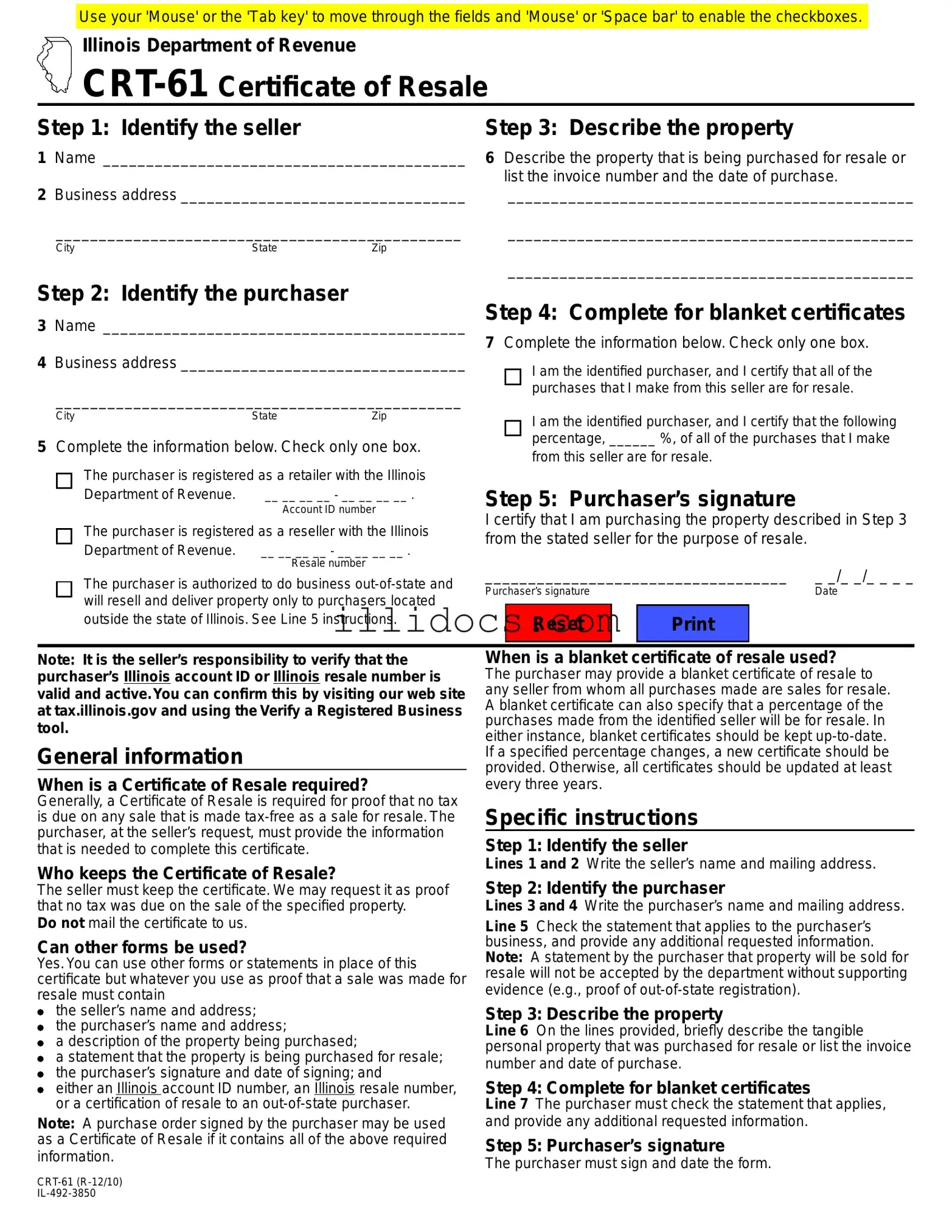What is the Illinois CRT-61 form and when is it needed?
The Illinois CRT-61 form, also known as the Certificate of Resale, is a document used to prove that no sales tax is due on certain transactions. It is required when a purchaser buys goods for resale, indicating that the sale is tax-exempt. Sellers need this certificate to validate that the purchaser is authorized to make tax-free purchases for resale purposes. When requested by the seller, the purchaser must provide the necessary information to complete the form.
Who is responsible for keeping the Certificate of Resale?
The seller is responsible for retaining the Certificate of Resale. This document serves as proof that no tax was due on the sale of the specified property. It is important for sellers to keep these records organized and accessible, as the Illinois Department of Revenue may request them for verification purposes. However, sellers should not mail the certificate to the department.
Can I use other forms instead of the CRT-61 Certificate of Resale?
Yes, other forms or statements can be used in place of the CRT-61, provided they contain specific information. This includes the seller’s and purchaser’s names and addresses, a description of the property being purchased, a statement confirming that the property is for resale, the purchaser’s signature and date, and either an Illinois account ID number or resale number. A signed purchase order can also qualify as a Certificate of Resale if it includes all the required details.
What is a blanket certificate of resale and when should it be used?
A blanket certificate of resale allows a purchaser to indicate that all or a specified percentage of their purchases from a seller are for resale. This type of certificate is useful for businesses that consistently buy items for resale from the same supplier. It is essential to keep blanket certificates updated, especially if the percentage of purchases for resale changes. Generally, these certificates should be reviewed and updated at least every three years to ensure compliance.
